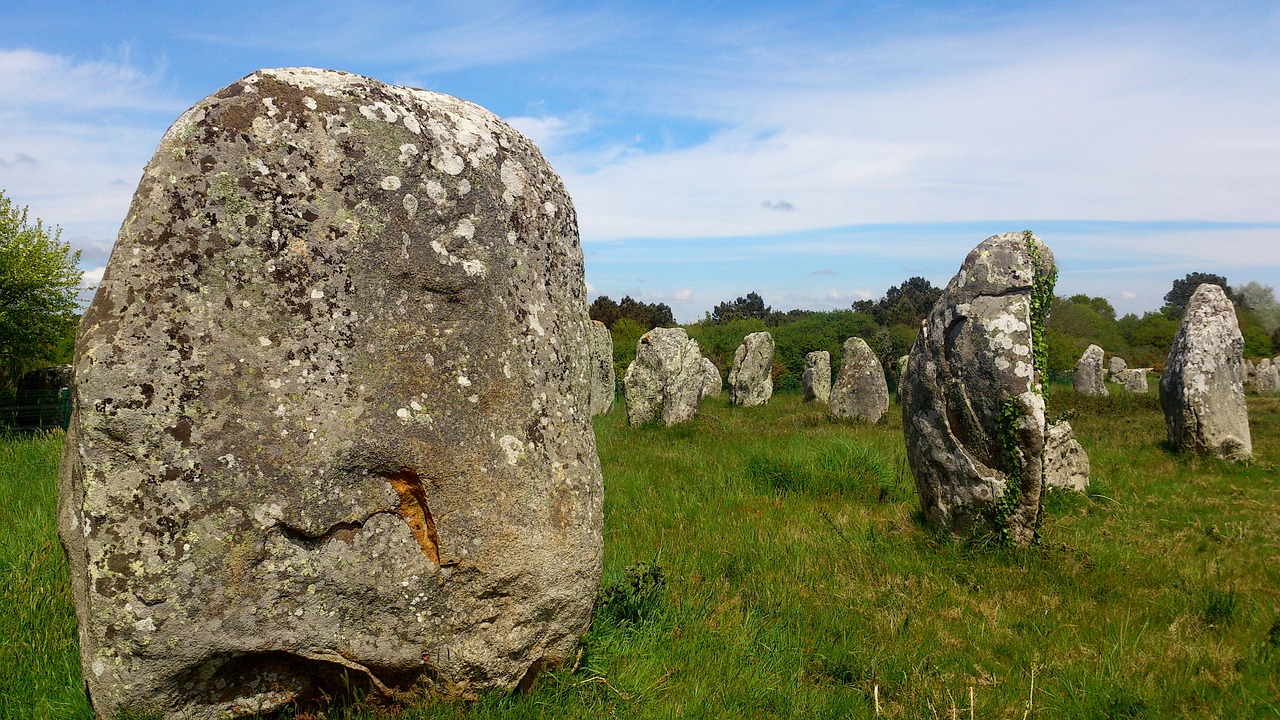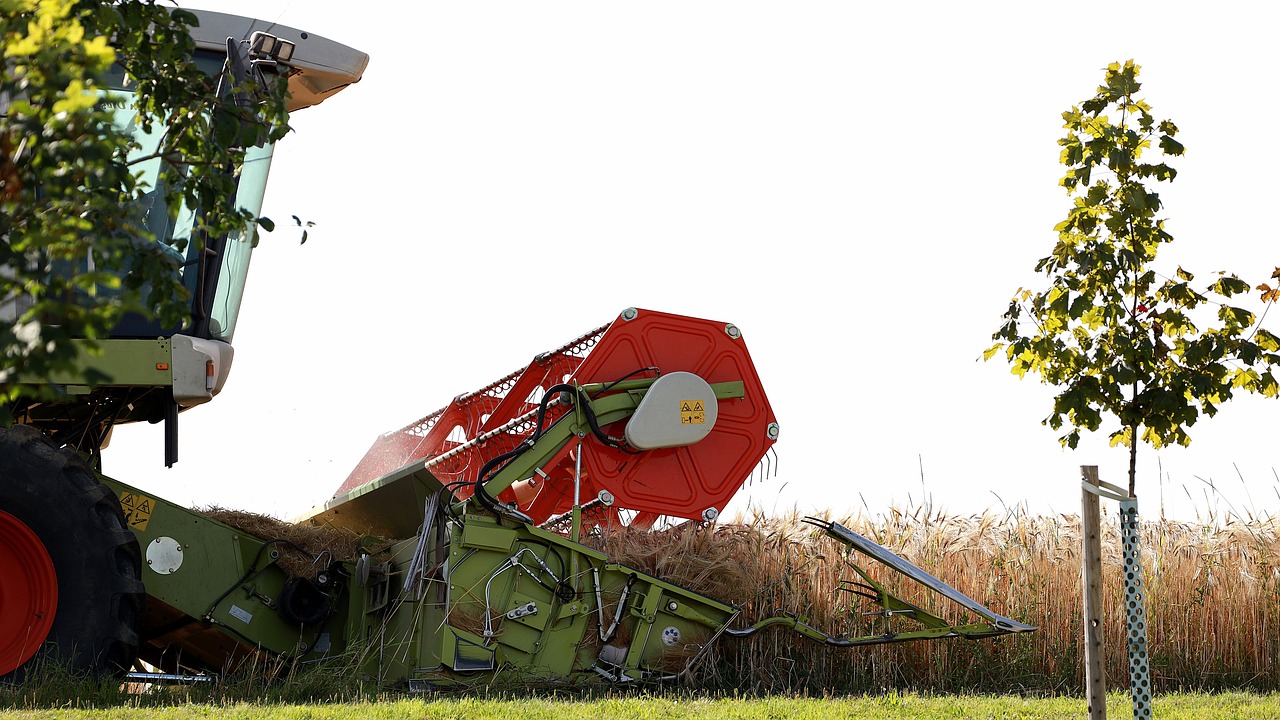Understanding the Artifacts of the Neolithic Revolution
During the Neolithic Revolution, a pivotal period in human history, a plethora of artifacts emerged that provide valuable insights into the transition from hunter-gatherer societies to settled communities. These artifacts, ranging from tools to pottery, art, and structures, offer a window into the advancements and cultural shifts that shaped early human civilization.
One of the most significant aspects of the Neolithic Revolution is the development of sophisticated tools that revolutionized agricultural practices, animal husbandry, and construction techniques. The use of stone tools, axes, and implements by ancient peoples marked a significant leap forward in human innovation, enabling the cultivation of crops, domestication of animals, and the construction of permanent settlements.
Pottery and ceramics also played a crucial role during the Neolithic era, facilitating food storage, trade, and cultural expression. The evolution of pottery-making techniques led to the creation of intricate vessels that not only served practical purposes but also reflected the artistic sensibilities of early societies.
Artistic expression in Neolithic artifacts further showcases the creative and symbolic capabilities of ancient peoples. Figurines, cave paintings, and carvings reveal the cultural and spiritual beliefs of early communities, offering a glimpse into their worldview and values.
Architectural achievements of Neolithic societies, including megalithic structures, dwellings, and communal spaces, demonstrate the ingenuity and social organization of these early civilizations. The construction methods and layout planning of these structures provide valuable insights into the daily lives and societal structures of Neolithic communities.
The development of agricultural implements and innovations during the Neolithic Revolution was instrumental in increasing food production and supporting growing populations. Advances in farming techniques, irrigation systems, and tools paved the way for surplus food production and the establishment of complex societies.
Moreover, the domestication of animals such as cattle, sheep, and pigs had profound economic, social, and cultural impacts on early human communities. The practice of animal husbandry not only provided a sustainable source of food and materials but also influenced social hierarchies and cultural practices.
The emergence of trade networks and exchange systems among Neolithic societies facilitated the movement of goods, ideas, and technologies across vast regions. This interconnectedness fostered cultural exchange, economic development, and the spread of innovations that shaped the development of early civilizations.
In reflecting on the legacy of the Neolithic Revolution, it becomes evident that the innovations, social structures, and cultural practices of this era continue to influence modern society. The enduring impact of the Neolithic Revolution serves as a testament to the ingenuity and resilience of early human communities in adapting to and shaping their environments.

Tools of the Neolithic Revolution
During the Neolithic Revolution, ancient peoples utilized a variety of tools that played a crucial role in transforming their societies. Stone tools were among the most significant innovations of the era, enabling early humans to engage in agriculture, animal husbandry, and construction activities with greater efficiency. Axes, in particular, were essential tools that facilitated the clearing of land for farming and the construction of shelters. These tools marked a significant shift from the hunting and gathering practices of earlier periods, laying the foundation for settled communities and the development of complex civilizations.
Additionally, implements such as sickles and hoes revolutionized agricultural practices by allowing for the cultivation of crops on a larger scale. The introduction of these tools led to increased food production, surplus storage, and the establishment of more permanent settlements. Neolithic peoples also crafted tools for spinning, weaving, and crafting pottery, further enhancing their ability to create and trade goods.
The innovation and widespread use of these tools during the Neolithic era not only improved the efficiency of daily tasks but also paved the way for technological advancements in the future. By harnessing the power of these tools, early humans were able to harness the resources of their environment, leading to significant social and economic changes within their communities.

Pottery and Ceramics
When delving into the world of Neolithic artifacts, one cannot overlook the profound impact of pottery and ceramics on early human societies. The evolution of pottery-making during the Neolithic era marked a significant advancement in food storage, trade, and cultural expression. Neolithic pottery artifacts not only served practical purposes but also reflected the artistic sensibilities and cultural identities of ancient communities.
Neolithic pottery was more than just a vessel for holding food; it was a canvas for creativity and innovation. The techniques employed in crafting these ceramics varied from region to region, showcasing the diverse artistic traditions of different Neolithic cultures. From simple, utilitarian designs to intricate patterns and motifs, Neolithic pottery artifacts provide a glimpse into the aesthetic preferences and technical skills of our ancestors.
Moreover, the uses of Neolithic pottery extended beyond mere functionality. These vessels played a crucial role in facilitating trade and exchange between communities, serving as valuable commodities in early economic systems. The presence of distinct pottery styles in archaeological sites also indicates the existence of trade networks and cultural interactions among Neolithic societies.
Examining Neolithic ceramics not only sheds light on ancient technologies and craftsmanship but also offers insights into the social and economic dynamics of early settled communities. The ability to create durable and aesthetically pleasing pottery was a testament to the ingenuity and resourcefulness of Neolithic peoples, highlighting their adaptability to changing environments and their aspirations for cultural expression.

Artistic Expression in Neolithic Artifacts
Artistic Expression in Neolithic artifacts delves into the intricate world of symbolic and creative elements found in various artifacts from this era. These ancient objects, such as figurines, cave paintings, and carvings, offer a glimpse into the artistic sensibilities of early human societies. The Neolithic period witnessed a surge in artistic expression, as evidenced by the intricate designs and motifs adorning these artifacts.
Figurines crafted from clay or stone showcase the early humans' fascination with representing the human form, animals, and mythical beings. These figurines often served ritualistic or symbolic purposes, offering insight into the spiritual beliefs and cultural practices of Neolithic communities. The intricate details and craftsmanship of these figurines highlight the artistic skill and creativity of our ancestors.
Cave paintings found in various regions around the world provide a unique canvas for understanding the artistic prowess of Neolithic peoples. These ancient artworks depict scenes of daily life, hunting expeditions, and mythological narratives, offering a window into the cultural landscape of the time. The use of natural pigments and intricate designs in these paintings demonstrate the early humans' ability to communicate and express themselves through art.
Carvings on stone pillars, tools, and other objects showcase the Neolithic artisans' talent in creating intricate patterns and designs. These carvings often feature geometric shapes, animal motifs, and symbolic representations, reflecting the cultural beliefs and practices of ancient societies. The precision and attention to detail in these carvings speak to the artistic sophistication of Neolithic craftsmen.
Overall, the artistic expression found in Neolithic artifacts provides a rich tapestry of cultural heritage and creative ingenuity. These ancient artworks not only serve as a testament to the artistic skills of early humans but also offer valuable insights into their beliefs, values, and way of life.

Architecture and Structures
During the Neolithic period, remarkable architectural achievements emerged, showcasing the ingenuity and communal efforts of early human societies. One of the most iconic structures of this era is the megalithic monument, such as Stonehenge in England or Göbekli Tepe in Turkey. These massive stone structures, meticulously arranged in circular patterns, serve as a testament to the advanced planning and construction skills of Neolithic people. The precise alignment of these megaliths with astronomical events also hints at a deep understanding of celestial movements and possibly religious or ceremonial significance.
Additionally, Neolithic communities built various types of dwellings, ranging from simple mud-brick houses to more elaborate timber structures. These dwellings not only provided shelter but also served as centers of domestic life and social interaction. The layout planning of Neolithic settlements reflects a sense of community organization, with shared spaces for cooking, crafting, and communal gatherings. The construction methods employed, such as timber framing or wattle and daub techniques, highlight the resourcefulness and craftsmanship of ancient builders.
Furthermore, communal spaces like longhouses or ceremonial enclosures played a vital role in the social fabric of Neolithic societies. These structures served as gathering places for rituals, feasting, and decision-making, fostering a sense of identity and cohesion among community members. The elaborate designs and decorations found in some of these architectural remains suggest a rich symbolic language and cultural expression embedded in the built environment.

Agricultural Implements and Innovations
The Neolithic Revolution marked a significant shift in human history with the development of agricultural implements and innovations that transformed early societies. One of the key advancements during this period was the creation of specialized tools for farming, such as plows, sickles, and irrigation systems. These agricultural implements revolutionized food production by increasing efficiency and allowing for larger-scale cultivation.
Furthermore, the Neolithic period saw the domestication of plants and animals, leading to the development of farming techniques that enabled settled communities to sustain themselves. The cultivation of crops like wheat, barley, and legumes not only provided a stable food source but also contributed to the establishment of surplus food reserves, supporting population growth and societal complexity.
Moreover, the introduction of agricultural innovations such as crop rotation and selective breeding enhanced productivity and crop yields. By understanding the seasonal cycles and adapting planting strategies, Neolithic farmers optimized their harvests and diversified their agricultural practices.
Additionally, the Neolithic era witnessed the creation of storage facilities for agricultural produce, allowing for long-term food preservation and trade. The development of granaries and storage pits enabled communities to store surplus crops, facilitating economic exchanges and the establishment of trade networks.
Overall, the agricultural implements and innovations of the Neolithic Revolution laid the foundation for the agricultural practices that continue to shape modern farming techniques and food production systems. By harnessing the power of agriculture, early human societies were able to thrive and evolve, setting the stage for the development of complex civilizations.

Domestication of Animals
During the Neolithic period, one of the most significant developments was the domestication of animals. Early human communities began to tame and breed animals such as cattle, sheep, and pigs for various purposes. This marked a crucial shift from hunting and gathering to animal husbandry, leading to profound changes in the way societies functioned.
Domesticated animals provided a sustainable source of food through meat, milk, and other products. They also served as labor for agricultural tasks, transportation, and even as companions. The close relationship between humans and animals during this period laid the foundation for the development of complex societies and cultural practices.
Animal domestication not only impacted the economy and food production but also had social and cultural implications. It led to the establishment of property rights, social hierarchies, and new forms of community organization. The practice of animal husbandry played a crucial role in shaping early human settlements and fostering social cohesion.
Moreover, the domestication of animals enabled humans to control their environment to a greater extent, leading to increased stability and security. It allowed for the establishment of permanent settlements and the development of specialized skills and knowledge related to animal care and breeding.
Overall, the domestication of animals during the Neolithic Revolution was a transformative process that significantly influenced the trajectory of human civilization. It not only provided practical benefits in terms of food production and labor but also played a central role in shaping the social, economic, and cultural dynamics of early societies.

Trade Networks and Exchange
Trade networks and exchange played a crucial role in the development of Neolithic societies, facilitating the movement of goods, ideas, and technologies across vast distances. These networks were essential for the exchange of surplus agricultural products, raw materials, and finished goods, contributing to economic development and cultural exchange among different communities.
The emergence of trade routes enabled Neolithic peoples to connect with distant regions, fostering relationships and interactions that transcended geographical boundaries. Through these networks, exotic goods such as obsidian, copper, and shells were traded over long distances, highlighting the interconnectedness of ancient societies and the diversity of resources available.
Trade not only involved the exchange of material goods but also the sharing of knowledge and innovations. Neolithic communities benefited from the transfer of agricultural techniques, metalworking skills, and artistic styles through trade interactions, leading to cultural diffusion and technological advancements.
Moreover, trade networks played a significant role in shaping social structures and hierarchies within Neolithic societies. The control of trade routes and valuable commodities conferred power and influence upon certain individuals or groups, leading to the emergence of specialized roles such as traders, merchants, and artisans.
Overall, the establishment of trade networks and exchange systems during the Neolithic period laid the foundation for interconnectedness and cultural exchange that continue to influence global trade and communication in the modern world.

Legacy of the Neolithic Revolution
The Neolithic Revolution left a profound and lasting impact on human civilization, shaping the course of history and laying the foundation for modern society. One of the key legacies of this transformative period is the shift from nomadic lifestyles to settled communities, marking the beginning of agricultural practices and the domestication of plants and animals.
This transition to a more sedentary way of life brought about significant changes in social organization, economic systems, and cultural practices. The development of agriculture enabled early human societies to produce surplus food, leading to population growth, the establishment of permanent settlements, and the emergence of complex social structures.
Moreover, the innovations and advancements made during the Neolithic era, such as the invention of pottery, the introduction of metal tools, and the construction of monumental structures, laid the groundwork for further technological progress and cultural development. These achievements not only improved the quality of life for ancient peoples but also paved the way for future generations to innovate and expand upon their knowledge.
Another enduring legacy of the Neolithic Revolution is the establishment of trade networks and exchange systems, which facilitated the movement of goods, ideas, and technologies between different communities. This interconnectedness fostered cultural exchange, economic growth, and the spread of innovations, contributing to the diversity and richness of human societies.
Furthermore, the domestication of animals during the Neolithic period had far-reaching consequences, shaping human-animal relationships and influencing the development of agriculture, transportation, and trade. The practice of animal husbandry not only provided a sustainable source of food and materials but also contributed to the cultural identity and economic prosperity of early civilizations.
In conclusion, the legacy of the Neolithic Revolution continues to resonate in the present day, underscoring the resilience, creativity, and adaptability of human beings throughout history. By studying the artifacts, structures, and innovations of this pivotal period, we gain valuable insights into the origins of modern society and the enduring impact of our ancestors' ingenuity and resourcefulness.
Frequently Asked Questions
- What is the Neolithic Revolution?
The Neolithic Revolution refers to the significant transition in human history from nomadic hunter-gatherer societies to settled agricultural communities. It marked a period of fundamental change in human culture and lifestyle, characterized by the development of agriculture, domestication of animals, and the establishment of permanent settlements.
- What are some key artifacts of the Neolithic era?
Some key artifacts of the Neolithic era include stone tools, pottery, art pieces such as figurines and cave paintings, as well as architectural structures like megaliths and dwellings. These artifacts provide valuable insights into the technological, social, and cultural advancements of early human societies.
- How did the Neolithic Revolution impact human civilization?
The Neolithic Revolution had a profound impact on human civilization by laying the foundation for settled communities, surplus food production, specialized labor, and the development of complex societies. It also led to advancements in agriculture, trade, and technology, shaping the course of human history for millennia to come.
- What role did agriculture play in the Neolithic Revolution?
Agriculture played a central role in the Neolithic Revolution by enabling early humans to cultivate crops, domesticate animals, and establish permanent settlements. This shift from a nomadic lifestyle to agriculture-based societies revolutionized food production, social organization, and cultural development.
- How did the domestication of animals impact Neolithic societies?
The domestication of animals during the Neolithic period had far-reaching impacts on societies, including providing a stable source of food, labor for agricultural tasks, and materials for clothing and tools. It also facilitated trade, transportation, and the development of diverse cultural practices.



















